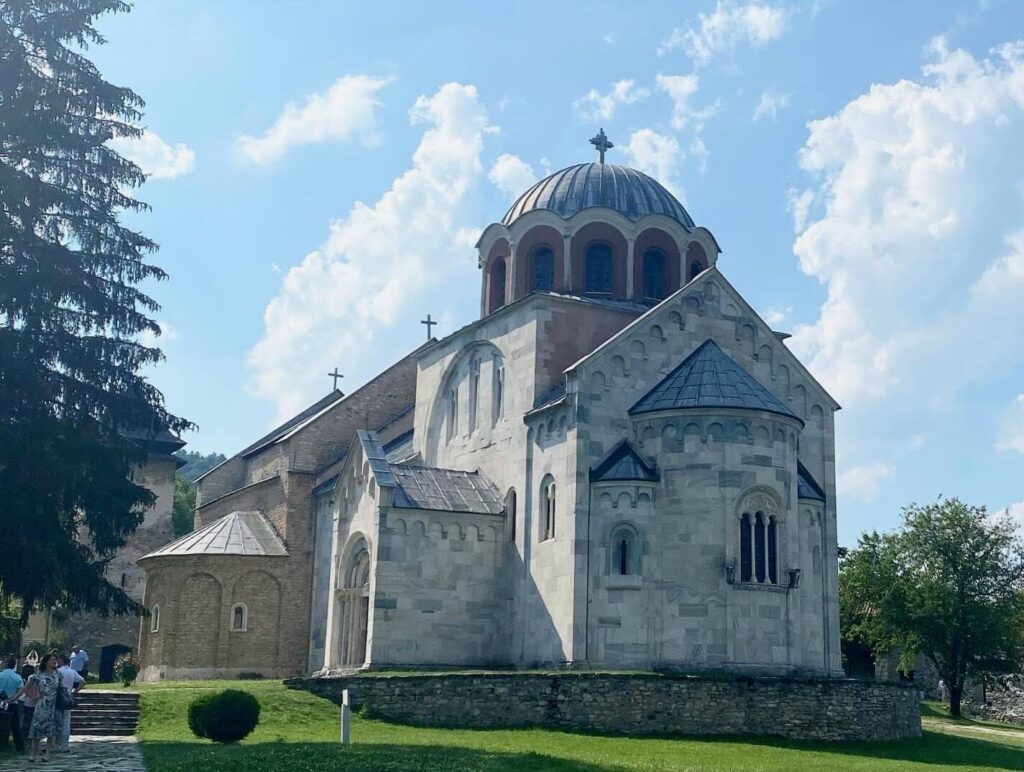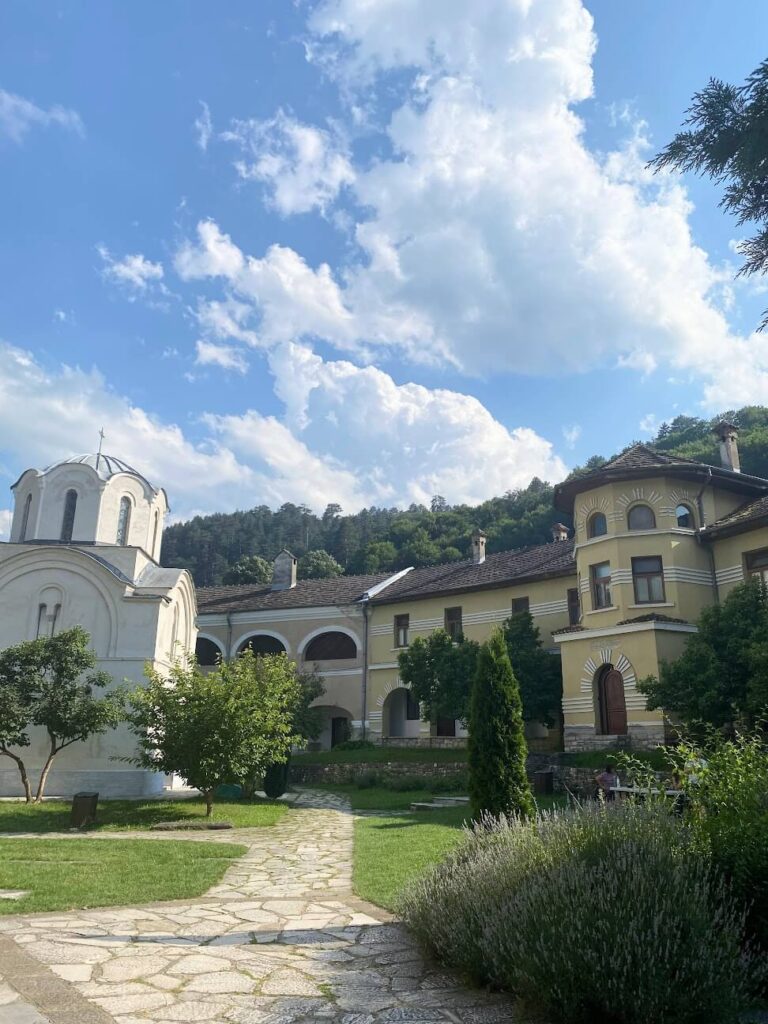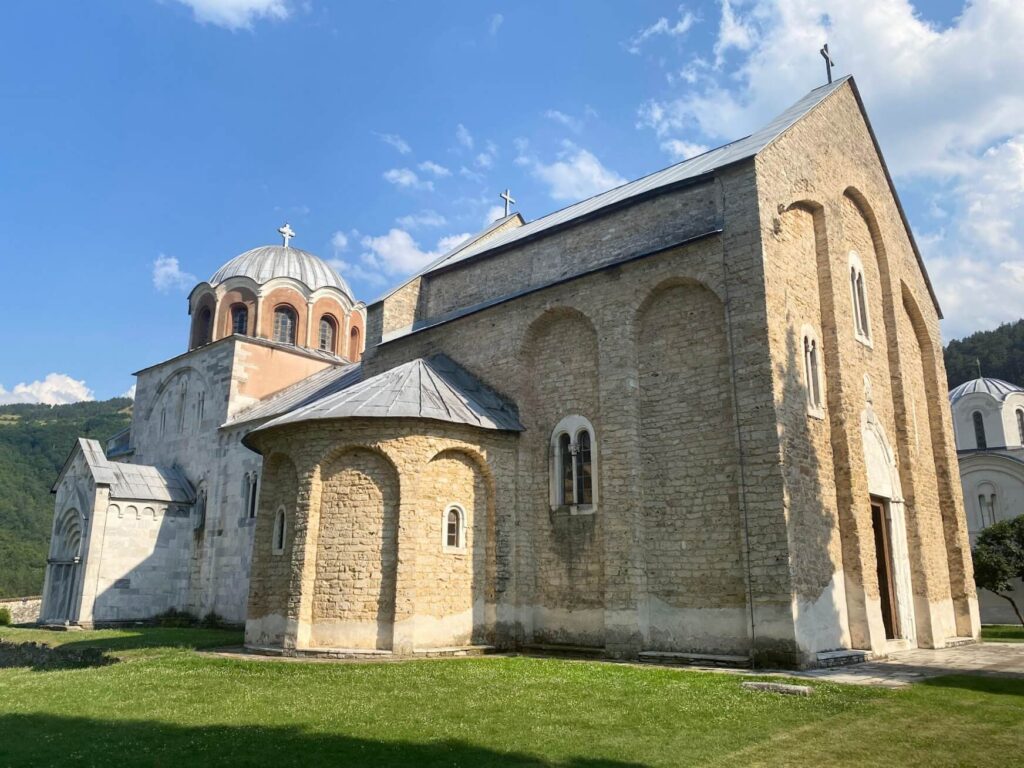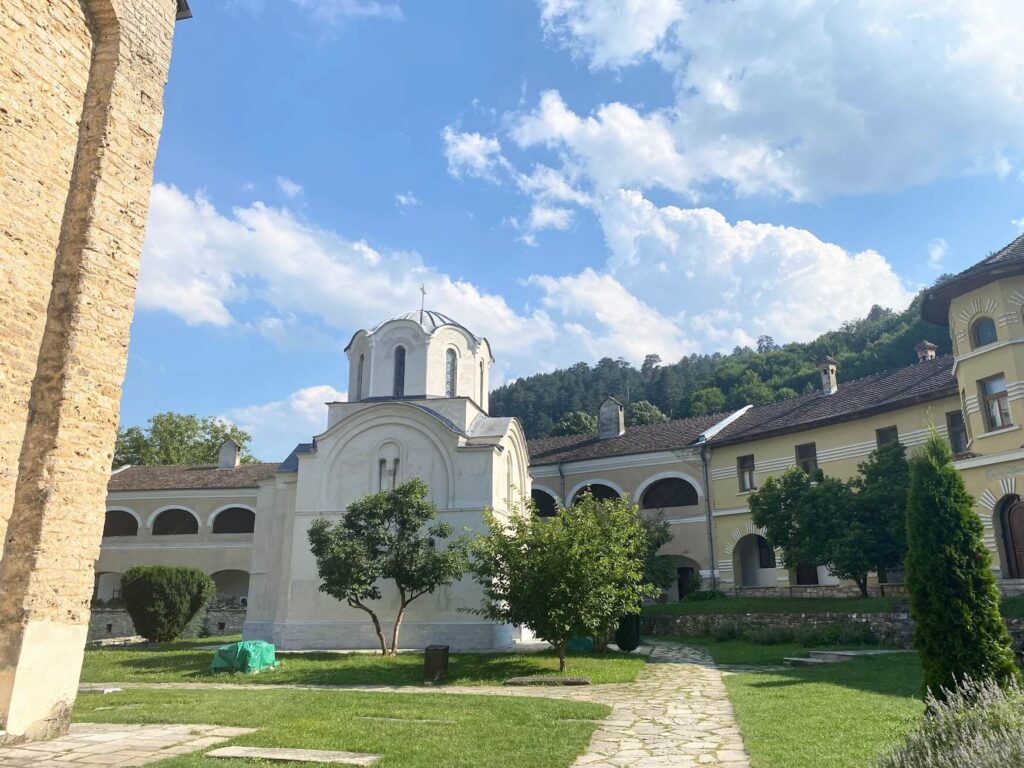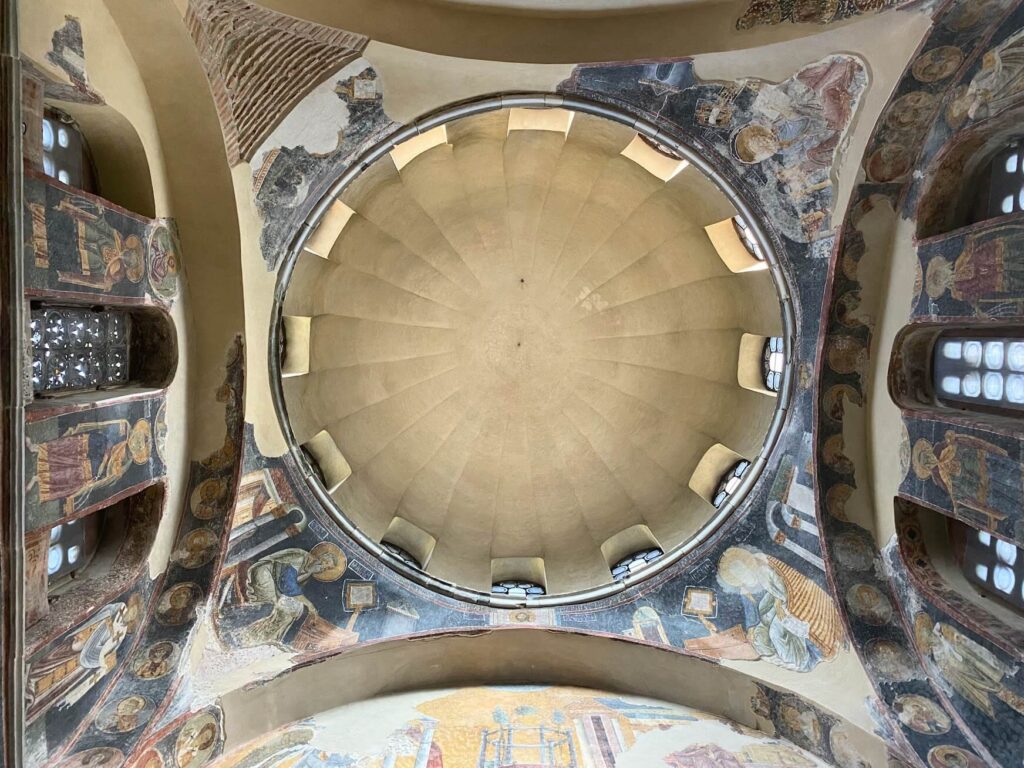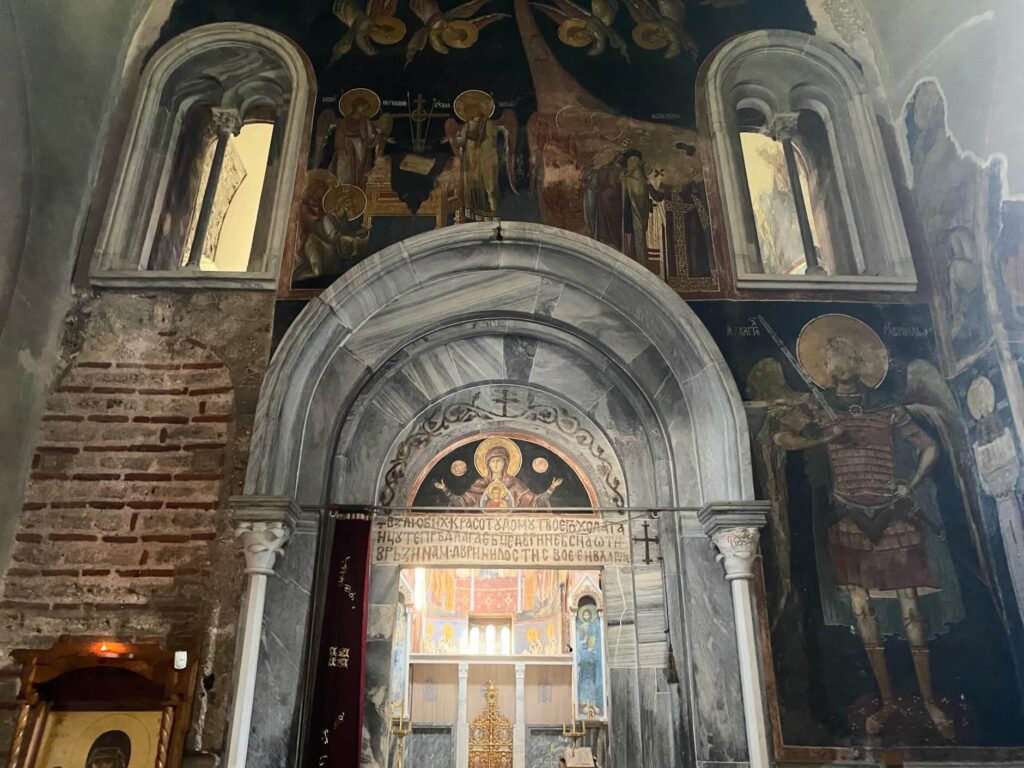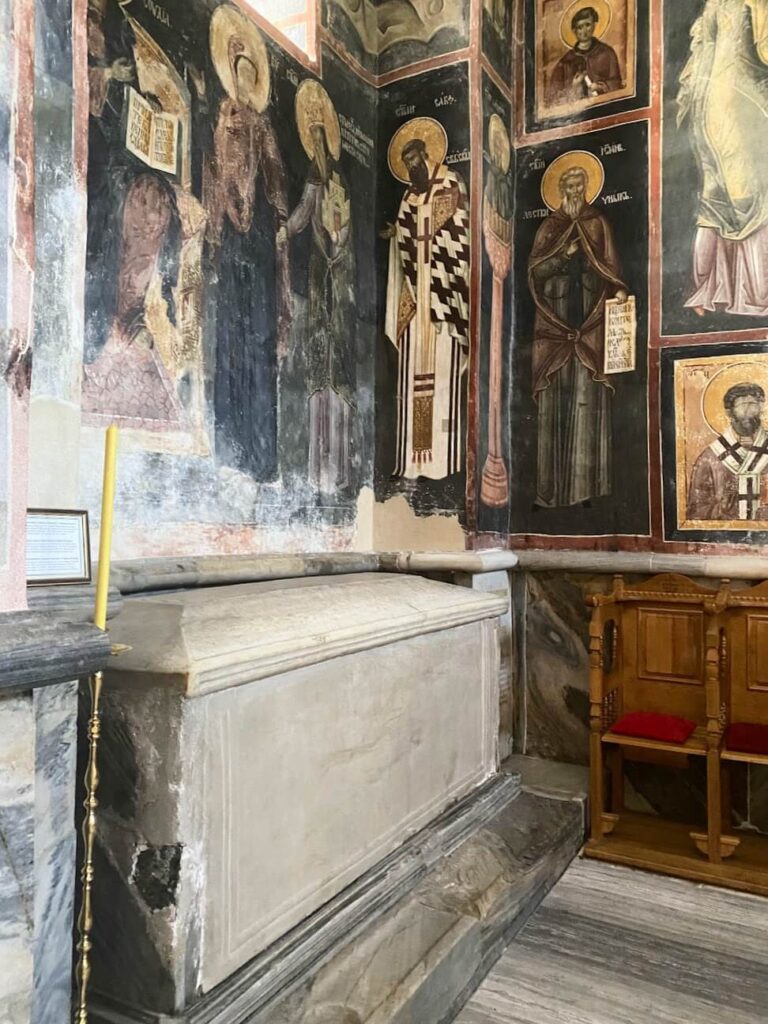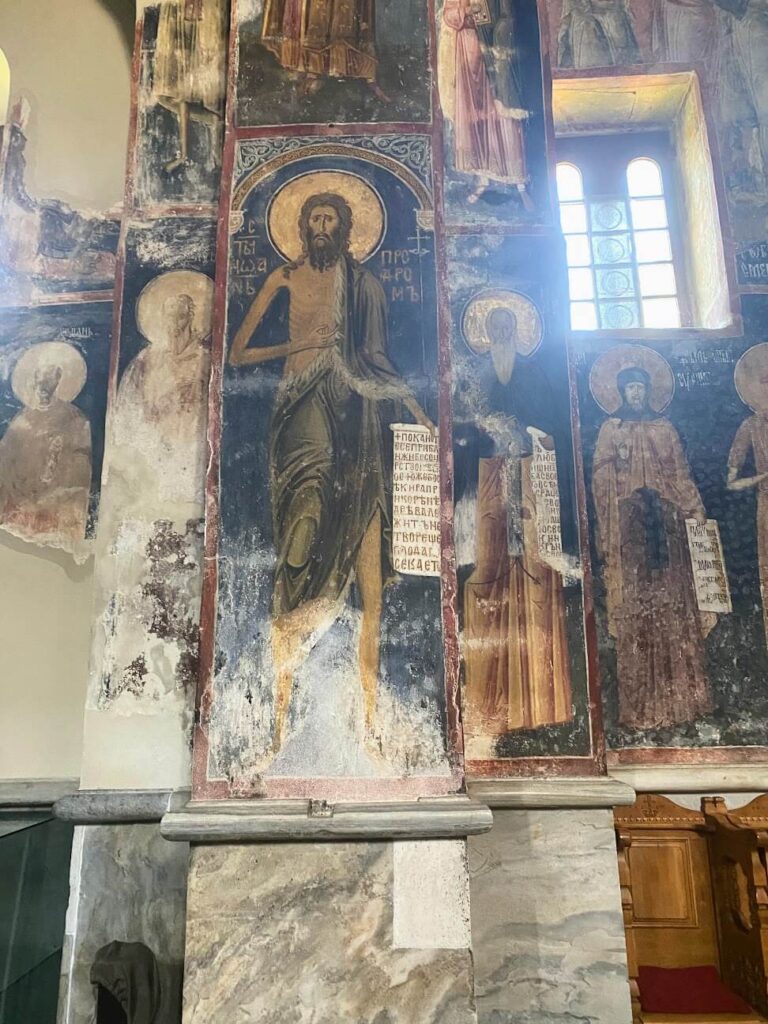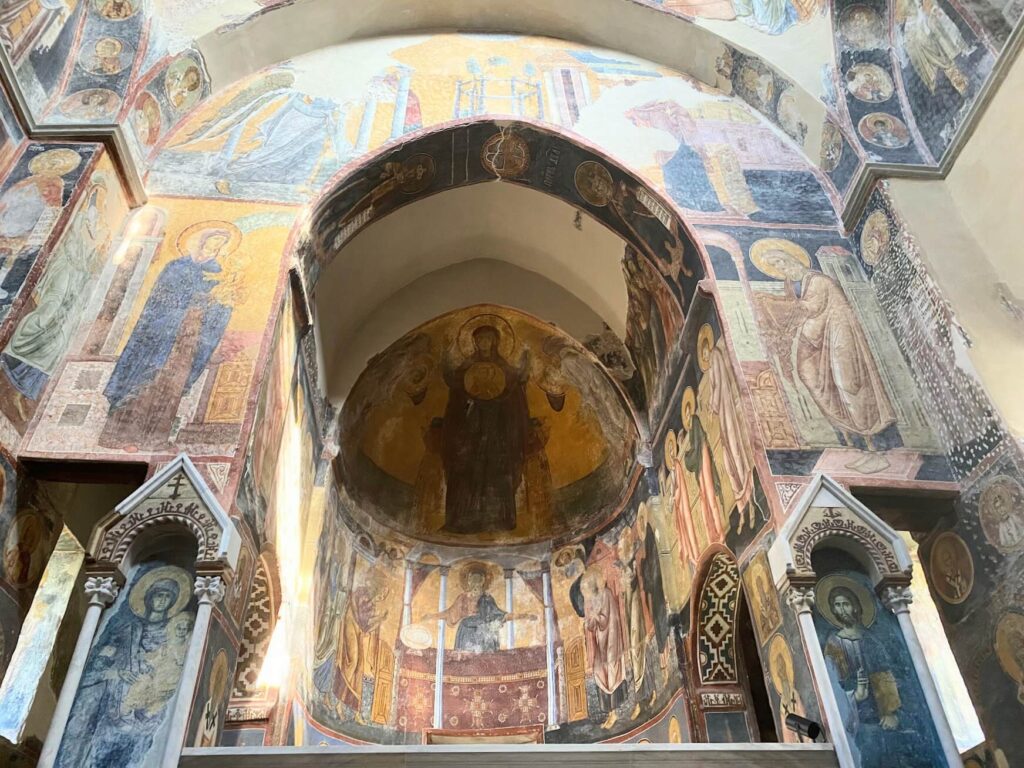Studenica Monastery is the largest and one of the most important monasteries in Serbia. With its fantastic architecture and wonderful location in the middle of intact nature, it looks like a place out of this world. If you’re interested in medieval architecture and monastic life, Studenica Monastery in Serbia is a place to visit. Here is the Culture Tourist guide to that fantastic place.
Studenica Monastery in Serbia
Serbia is home to more than 200 medieval monasteries, which were centres of art, culture and knowledge throughout history. They are still important religious centres in modern Serbia today. I visited Studenica Monastery while travelling alongside the Cultural Route of the Council of Europe – TRANSROMANICA. During my trip, I saw five medieval monasteries in Serbia with unique Romanesque stylistic features.
Studenica Monastery is located in central Serbia, in the Raška region, which was the birthplace of the medieval Serbian state. It’s an area filled with history still evident by old fortresses and numerous monasteries. While riding a car on a curvy road from the town of Kraljevo towards Studenica, the landscape was quickly changing. Behind each curve, there was a new breathtaking mountain view.
After around one hour-long drive, I finally saw the sight of the Studenica Monastery complex. Placed on a hill plateau and made of bright marble, it’s a sight that doesn’t fail to impress.
⤷ Read more: Exploring the medieval monasteries in Serbia
Studenica Monastery History
Studenica Monastery was established in the late 12th century by the founder of the medieval Serbian state and the Nemanjić dynasty, Stefan Nemanja. Besides his, the graves of his wife Anastasia and his son, Stefan the First-Crowned, the first king of Serbia, are also located there. Studenica is also an essential place for Serbian history because it was there that Saint Sava, Stefan Nemanja’s younger son, established the independent Orthodox Church of Serbia in 1219. He also wrote the first literary work in Serbian there. Because of that, Studenica Monastery is still perceived as an important symbol of Serbian culture.
The monastery was closely linked with the rulers of the Nemanjić dynasty. That’s why they supported it and erected other edifices at the monastery complex, too.
The area around the Studenica Monastery was conquered by the Ottoman Turks in the mid-15th century, and they ruled it until the 19th century. It was a rough time for the monastery. Not only because of the Ottoman laws and high taxes, but also because of the few plague outbursts, earthquakes and fires that damaged the monastery. Despite all of that, monks never wholly abandoned it. That makes Studenica one of the rare monasteries with a continuity of monastic life spanning more than 800 years. Studenica Monastery has been on the UNESCO List of World Cultural Heritage since 1986.
⤷ Read more: Cultural tourism explained – How to be a cultural tourist?
Studenica Monastery Architecture
Among the medieval monasteries I visited along the Cultural Route of the Council of Europe – TRANSROMANICA, the Studenica Monastery complex is best preserved. Surrounded by a circular fortification wall, you can still see the two entrances that led into it. It consisted of 14 churches and chapels, three of which are still preserved today.
Besides them, the entrance tower, monks’ quarters and other buildings could also be seen. Quarries from which they got the marble and the medieval settlement for the quarry workers were close to the monastery, too.
The main church is dedicated to the Mother of God, dominating the whole site. It was built in ten years only. The first thing that impressed me was the material it was constructed of. It was created with a combination of white and grey marble blocks giving it a sophisticated textured quality.
The church combines Romanesque and Byzantine stylistic characteristics. The Western Romanesque influence is visible from the outside, especially in the design of the single-nave church with a dome. However, the frescoes in its interior show a strong Byzantine influence. With its fantastic design, the Church of the Mother of God in Studenica Monastery soon became a model for other churches in the region.
Some 50 years after it was constructed, Stefan Nemanja’s grandson, King Radoslav, initiated the construction of the monumental narthex. It’s an entrance building to the church made of bricks. That part of the building is dedicated to Saint Nicholas and Saint Simeon.
A smaller church located south of the main one is known as the King’s Church. It was made in 1314 and commissioned by King Milutin. It’s home to some of the best Byzantine frescoes in Europe.
⤷ Read more: 20 Most iconic churches in Europe
Studenica Monastery Frescoes
Serbian medieval monasteries built in the 13th and 14th centuries are renowned for their frescoes. They are great examples of the ‘monumental style’ in Byzantine art. It developed after the fall of Constantinople when it was conquered by the Crusaders in 1204. Many Byzantine artists left it and went to Europe. They brought a new approach to space in wall paintings, now characterised by unique expressiveness. That influence from the East changed European fresco painting, with artists like Giotto and Cimabue participating in the same trend. You can see that similarity well in Studenica if you have seen any of Giotto’s frescoes.
The wall paintings in the Church of the Mother of God sanctuary are some of the first examples of that style, thus marking a turning point in medieval Byzantine and Romanesque paintings. Finished in 1209, fresco decoration was commissioned by Saint Sava. Painters, who probably came from Constantinople, used lapis lazuli and gold in their paintings. That’s witnessing great trading connections of that time. Lapis lazuli was one of the most expensive pigments found only in the mountains of today’s Afghanistan.
The most renowned fresco there is the one of Saint Patroness, located in the sanctuary and holding baby Jesus in her hands.
Another fresco that shouldn’t be missed in Studenica Monastery is the Crucifixion of Jesus on the western wall. It depicts Jesus’ death on the cross, with his mother, Saint John the Apostle, soldier Longinus, women and angels surrounding him.
As with many medieval frescoes, characters and situations are identified by the inscriptions on them. These are interesting because, in this church, you can see the first Cyrillic inscription written in Serbian fresco paintings.
Studenica Monastery stone decoration
The interior of the largest church in the Studenica Monastery complex isn’t decorated with frescoes only. It’s also home to some of the oldest medieval sculptures in Serbia.
Among them, the stone portal connecting the church nave and its narthex is the most interesting. Although you can notice typical medieval fear of the empty space in its decoration, it’s much more elegant and narrower than its Western contemporaries. It’s filled with animals and mythical creatures representing the fight between good and evil. The representation of an eagle is especially interesting. Because of his image as a ruler who created the Serbian state and brought its people closer to God, it’s interpreted as a representation of Stefan Nemanja.
Watch my video about the medieval monasteries on the TRANSROMANICA route in Serbia:
Tips for visiting Studenica Monastery
⤷ How to get to Studenica Monastery – The best way to visit Studenica Monastery is by car. I flew to Belgrade, rented a car there and visited all five medieval monasteries on the TRANSROMANICA route that way. The closest bigger towns are Kraljevo and Novi Pazar, and you can take a local road to get there. My tip is to use Google Maps because it’s more reliable than the GPS navigation built into a car.
⤷ What to wear in medieval monasteries in Serbia – All the medieval monasteries on the TRANSROMANICA route in Serbia are in use, so you should dress appropriately when visiting them. Short sleeves and anything up to your knees is fine. You don’t need to cover your head when entering the monasteries.
⤷ National Museum in Kraljevo – If you’d like to learn more about the history of Studenica Monastery, visit National Museum in Kraljevo. It’s home to archaeological artefacts from the monastery, which will give you an even better overview of that special place.
⤷ Paying in Serbia – The official currency in Serbia is the Serbian Dinar. One euro is around 117 dinars, and one US dollar is about 106 dinars. I used the Revolut card to withdraw money at the ATM, pay for tools, and pay at gas stations and restaurants. In smaller cafes and markets, I paid with cash.
⤷ For more information: For more information about visiting the Studenica Monastery, read the TRANSROMANICA page dedicated to it. You can find helpful info about the Serbian medieval monasteries on the Serbian Tourism Board and the official Studenica Monastery websites.
With its fascinating history, beautiful art and architecture and peaceful nature, Studenica Monastery is one of the most unique places I have ever visited. If you’d like to explore hidden European cultural heritage, plan a trip to that special place.
I visited Studenica Monastery and other TRANSROMANICA sites in Serbia during the press trip organised by them and their partners from the Serbia Tourist Board. Many thanks to them for organising this trip for me. As always, all opinions are my own.


